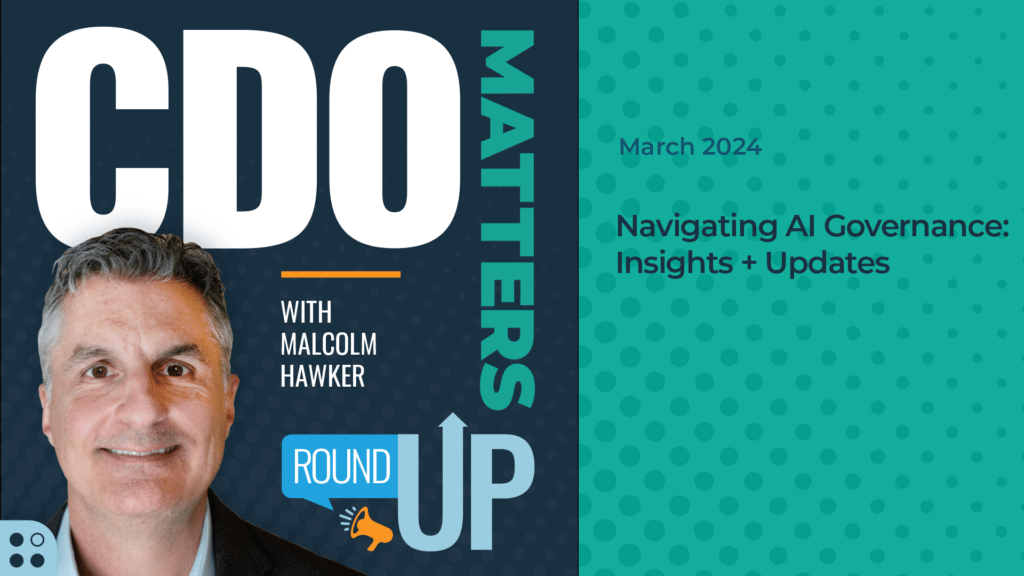Table of Contents
- Starting with Analytical MDM – Get to Know Your Data
- Implementation Styles Supporting Analytical MDM
- Business Benefits of Analytical MDM
- Why Move to Operational MDM?
- Implementation Styles Supporting Operational MDM
- Considerations When Implementing Operational MDM
- In Conclusion: Implementation Styles are Not the Goal
- Selling MDM to Leadership
Many organizations that I have worked with over the years start their master data management (MDM) journey with an analytical MDM solution.
There are many reasons why this is a logical starting point, one of the most important being that analytical MDM is non-disruptive to current business processes and data flows. That being said, there are limitations on the business impacts that can be achieved with only an analytical MDM solution.
In my experience, many of those who realize the most value and business impact have moved beyond analytical to operational MDM.
In this article, I will discuss why analytical MDM is a logical starting point, detail the typical implementation styles supporting analytical MDM share and the most common benefits that companies realize on their journey. I will then go on to discuss the potential business impacts of operational MDM, the implementation styles supporting operational MDM, and the important considerations when starting an operational MDM journey.
Starting with Analytical MDM – Get to Know Your Data
With an analytical MDM solution, data is typically collected from two or more source systems, cleansed, enriched and then matched and merged within the MDM platform. This cleansed data is then utilized to support downstream analytics.
One of the most common uses is the mapping of the various source records, which may contain duplicates within and across source systems, to the master record. This mapping supports the consolidation of transactions that may span systems or duplicate records. A common finding from such an exercise is that your top 10 customers (or suppliers or whatever data type) may change when transaction data is correctly consolidated.
There are several well-known reasons organizations often start their MDM journey with an analytical MDM solution as an initial minimum viable product (MVP). These include time-to-value, minimal organizational disruption, and lower complexity/risk than operational MDM.
Because an analytical MDM solution typically gathers as-is data from two or more source systems, there is no change required to existing business processes. Even if current processes result in the ongoing creation of duplicate records, it is the job of the analytical MDM solution to recognize this and update the consolidation mappings as needed.
Because an analytical MDM solution is non-disruptive to existing business processes, it requires fewer stakeholders to “buy-in” to the solution.
Additionally, in an analytical MDM solution, data flows are almost always one-way: Data from source systems flows into the MDM platform, and cleansed data in the MDM platform flows into downstream analytical platforms such as Microsoft Fabric or Snowflake. For this reason, analytical MDM solutions are less complex and therefore typically faster to implement.
One important but often overlooked reason to start with analytical MDM is the opportunity to get to know your data. When data from two or more source systems are brought into the MDM platform for validation, enrichment, cleansing, merging and matching, you have the ideal place to review and understand data issues by source system, including:
- Which system(s) typically have incomplete records?
- Which systems most often have invalid data values?
- Which system(s) typically have the most duplicates?
This information is vital if you intend to move beyond analytical MDM to operational MDM.
Implementation Styles Supporting Analytical MDM
Gartner defines four primary MDM implementation styles: Registry, Consolidation, Coexistence and Centralized.
Analytical Implementation Style 1: Consolidation Style
The most common implementation style for an analytical MDM solution is the consolidation style.
As described earlier, in a consolidation style deployment, data flows from source systems into the MDM platform for cleansing and consolidation (matching and merging) and then delivered to downstream analytical platforms.
Analytical Implementation Style 2: Centralized Style
One other implementation style that is often deployed in conjunction with the consolidation of source data is the centralized style.
This is typically done for common reference data management, cross-walks and mappings that need to be governed and consistent to also support downstream analytics.
A typical example would be mapping of customer classifications from multiple geographies to a standard classification taxonomy.

Business Benefits of Analytical MDM
Today, one of the most high-profile business impacts for analytical MDM is in supporting AI readiness at scale.
The most common use of AI in business can be generally categorized into three use cases:
- AI for customer engagement
- AI for process automation
- and AI for deep insights
In all cases, the potential positive impact of AI is completely dependent upon the quality of the data supporting it. This is where analytical MDM comes in to support AI initiatives.
THE CHALLENGE
Organizations Lack Consumable Data
Data Fragmentation:
Siloed data obstructs a holistic view, limiting AI effectiveness
Quality Concerns:
Inconsistent, unreliable data is hard to interpret and risks AI ‘hallucination.’
Integration Hassles:
Stitching together disparate data sources proves complex and time-consuming.


THE SOLUTION
Consumable Data Products with Profisee Master Data Management (MDM)
1
2
3
4
5
Other common business impacts to analytical MDM revolve around leveraging corrected consolidated information to provide more accurate insights used for critical decision-making.
For example, if you cannot correctly consolidate supplier spending across multiple business units, you cannot identify opportunities for consolidation, manage the risk of over-dependence on a single supplier or negotiate optimal terms.
In another example, companies can leverage accurate and consolidated customer spending across product lines to more accurately set customer segmentation (which could help reduce churn of high-value customers) and identify opportunities for cross-selling products. Although analytical MDM for these types of business decisions has an innate benefit, it is unfortunately often very difficult to quantify.
A more strategic use of analytical MDM is to enable consolidated corporate reporting and decision-making even when the organization has multiple ERP systems. Multiple ERP systems are often the result of merger and acquisition activity.
To streamline business operations, some organizations will perform an ERP consolidation. If done successfully, operating from a single ERP theoretically provides opportunities to standardize processes and workflows, simplify the IT landscape, and reduce IT costs.
However, ERP consolidation projects are extremely complex and often fraught with unforeseen challenges, irreconcilable business processes or cost overruns. This is where an analytical MDM solution can help.
Analytical MDM can provide consistent and always up-to-date consolidated mappings of common ERP master data across systems. Additionally, analytical MDM can support mappings of common codes, classifications and other reference data to a standard reference data set.
Combined, this can give an organization with multiple ERPs reliable, current and consistent cross-ERP reporting and visibility without the cost and risk of a full ERP consolidation.
Why Move to Operational MDM?
Although analytical MDM can provide real business benefits, many organizations will continue their MDM journey by eventually incorporating operational MDM into their overall MDM program.
The reason for this is that many operational MDM use cases can deliver higher and more easily quantified ROI than typical analytical MDM use cases. Additionally, many operational MDM use cases support business-critical functions that require highly governed and reliable master data.
Common Use Cases for Operational MDM
Many operational MDM use cases are industry-specific, but here are a few examples along with the business KPIs typically impacted:
Optimizing Maintenance, Repair and Operations (MRO) Spending
In manufacturing, oil & gas, transportation, utilities, construction, and minerals & mining, organizations often leverage operational MDM to optimize MRO spending.
In this use case, MDM assists organizations in further improving MRO by identifying like parts and assets across business lines — even when key attributes like part numbers, descriptions, or descriptive specifications change over time or are misaligned.
In this use case, operational MDM can reduce total MRO spend, improve MRO inventory utilization (turnover) and reduce MRO stock-outs.
Streamlining Customer and/or Product Onboarding
In this use case, MDM will typically streamline the onboarding or new item introduction process.
The impact in this use case is reduced time to market for new customers or new products, fewer errors in the onboarding process that can directly impact the ability to transact and reduced compliance risk.
Managing Healthcare Provider Credentialing
For healthcare organizations, initial and ongoing credentialing for providers is often a tedious and slow process.
Operational MDM can assist in collecting and consolidating provider data from both internal and external sources, ensure completeness and correctness of consolidated provider data, and deliver this cleansed data to credentialing tools and teams.
The impact is faster provider onboarding, which has a direct impact on revenues and can improve patient access to care, as well as streamline payment from healthcare payers both public and private.
Implementation Styles Supporting Operational MDM
In an operational MDM solution, there are typically two deployment styles used: centralized and coexistence.
Operational Implementation Style 1: Centralized Style
In a centralized implementation style, the master data is centrally created and updated within the MDM platform and once fully curated and vetted, delivered to downstream consuming systems.
In this deployment style, MDM is both the system of origination and the system of record for the master data.
Operational Implementation Style 2: Coexistence Style
In a coexistence implementation style, the MDM deployment
typically serves as a data “traffic cop” to validate and harmonize data that
may originate and/or get updated in multiple systems.

It is not uncommon for different deployment styles to support different use cases in a single MDM platform. For example, when a customer onboarding process requires rigorous diligence and vetting, a centralized deployment style may make the most sense.
In another use case, when ship-to information will continue to change across multiple ERP and order fulfillment platforms, a coexisting implementation style to harmonize changes across systems, potentially with data-steward oversight, may make the most sense.
Considerations When Implementing Operational MDM
The most important consideration when considering an operational MDM use case is that almost all operational use cases will require changes to business processes. To do this properly, you not only have to clearly define as-is and to-be processes and data flows, but also get buy-in from the business owners of the systems impacted by the use case. Surprisingly, failure to get business stakeholder buy-in is a common misstep and is an almost certain path to project failure.
That said, this does not mean you should not consider adding operational MDM use cases to your overall MDM program. Although more complex and requiring buy-in from the right executive stakeholders, the ROI impacts are often not only generally higher than those for analytical MDM, but also often more measurable.
The recommendation is not to avoid operational MDM use cases, but to choose specific use cases wisely, with proper buy-in, and as always, with limited but still impactful scope.
If you do this, you will be well on your way to becoming an even more vital data hero within your organization.
In Conclusion: Implementation Styles are Not the Goal
It is important to keep in mind that moving to operational MDM is not itself a goal.
Incorporating operational use cases can be more complex, require changes to business operations, and require buy-in from affected business stakeholders. However, many operational MDM use cases can deliver high ROI or reduce risk to critical operations.
For this reason, it is important to be judicial and selective when deciding to incorporate one or more operational MDM use cases. Read our complete guide to Selling MDM to Leadership for tips, best practices and insights that I’ve seen work for MDM practitioners working to expand an analytical MDM implementation into a full-fledged operational use case.
Selling MDM to Leadership

Christopher Dwight
Christopher is a well-respected master data management (MDM) thought leader and the VP of MDM Strategic Programs at Profisee. Christopher has been in the enterprise information management and MDM space for more than 25 years, including senior leadership stints at Oracle and Informatica. Over those years, Christopher has engaged with hundreds of organizations to assist them in their data management strategies and MDM journeys.
















